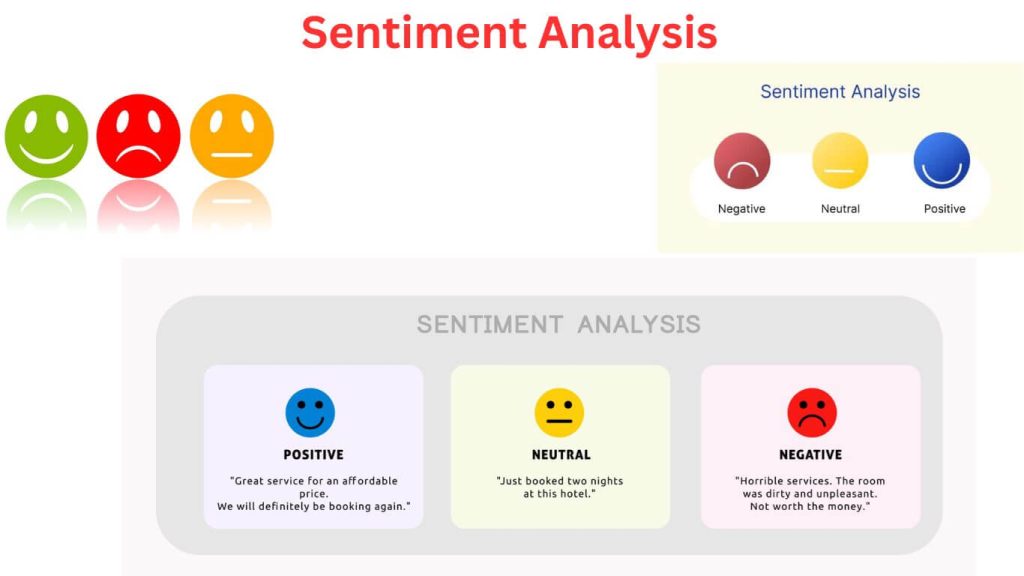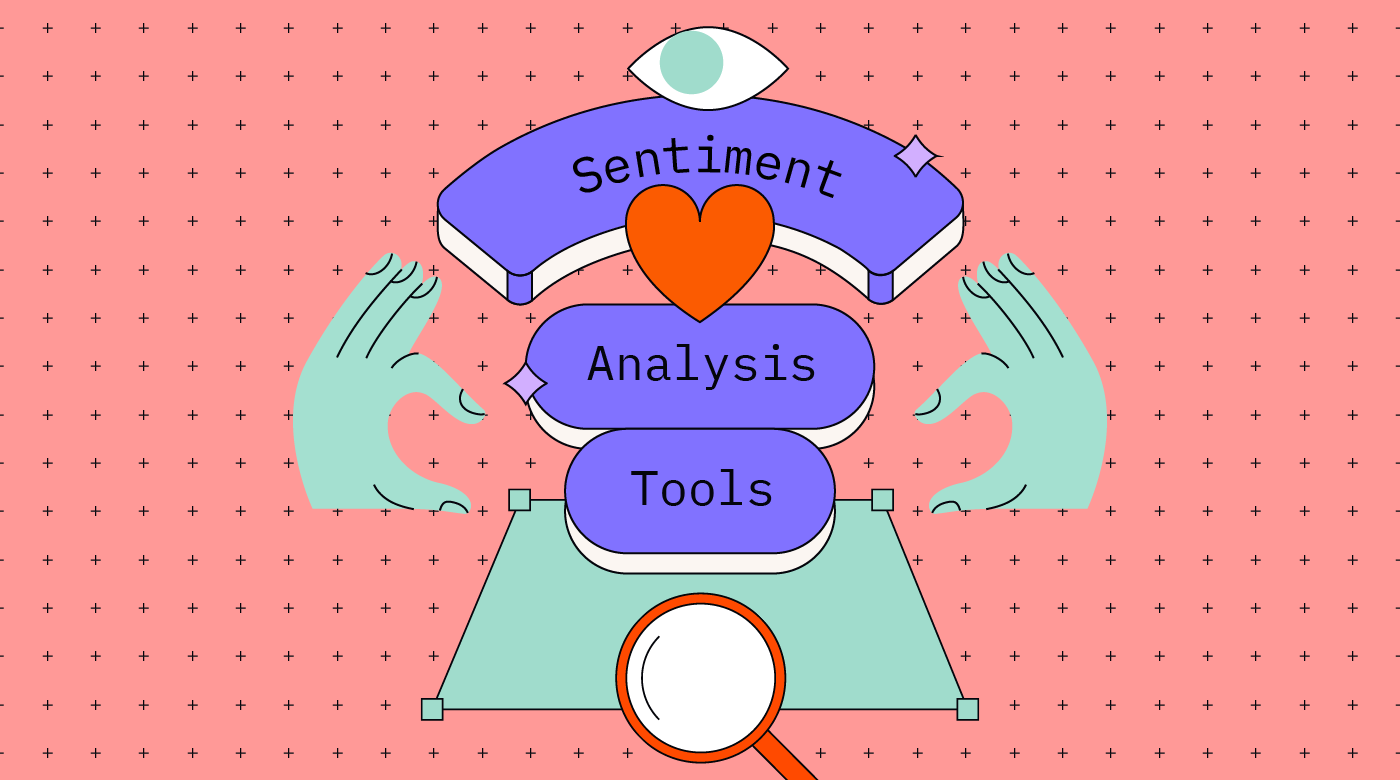In the era of information overload, businesses strive to understand their customers better than ever before. One invaluable tool in achieving this goal is sentiment analysis. Sentiment analysis tools, often referred to as sentiment analysis software or sentiment analysis APIs, have emerged as essential assets for organizations looking to gain insights into customer opinions, emotions, and feedback. In this article, we will delve into the fascinating world of what are sentiment analysis tools, exploring what they are, how they work, and why they are indispensable in today’s data-driven landscape.
What Are Sentiment Analysis Tools?

Understanding Sentiment Analysis
1. What is Sentiment Analysis?
Sentiment analysis, also known as opinion mining, is a process that involves the use of natural language processing (NLP) and machine learning algorithms to analyze and determine the sentiment or emotion expressed in a piece of text, such as customer reviews, social media posts, or survey responses. It aims to classify the sentiment as positive, negative, or neutral, providing valuable insights into public opinion.
2. The Importance of Sentiment Analysis
Sentiment analysis tools are not merely novelties; they play a crucial role in various fields:
- Business Insights: Companies can gauge customer satisfaction, identify areas for improvement, and adapt their strategies accordingly.
- Marketing Strategies: Marketers can tailor their campaigns to align with the prevailing sentiment, ensuring a more effective reach.
- Product Development: Understanding customer feedback helps in refining products and services.
- Risk Assessment: In finance and insurance, sentiment analysis can assess market sentiment and predict trends.
Types of Sentiment Analysis Tools
Sentiment analysis tools come in various forms, each designed for specific purposes:
1. Rule-Based Sentiment Analysis
Rule-based tools rely on predefined rules and lexicons to determine sentiment. They are effective but can be less adaptable to nuanced language.
2. Machine Learning-Based Sentiment Analysis
Machine learning-based tools use algorithms to learn from data and adapt to changing language patterns. They can handle complex language structures and are more versatile.
3. Hybrid Sentiment Analysis
Hybrid tools combine rule-based and machine-learning approaches for a balanced and accurate sentiment analysis.
Popular Sentiment Analysis Tools
Several sentiment analysis tools have gained popularity in recent years:
- VADER (Valence Aware Dictionary and sentiment Reasoner): This rule-based tool is known for its accuracy in detecting sentiment in social media text.
- IBM Watson: Leveraging machine learning, IBM Watson offers a comprehensive sentiment analysis solution suitable for various industries.
- Google Cloud Natural Language API: Google’s tool provides powerful sentiment analysis capabilities, along with entity recognition and content classification.
- Sentiment140: This tool specializes in analyzing sentiment from Twitter data, making it ideal for social media monitoring.
How Sentiment Analytics Works
Sentiment analytics tools follow a series of steps to determine sentiment:
- Text Preprocessing: The tool cleans and prepares the text data by removing stopwords and special characters.
- Tokenization: The text is divided into individual words or tokens for analysis.
- Sentiment Classification: Machine learning models or rule-based systems classify each token’s sentiment as positive, negative, or neutral.
- Aggregation: The tool aggregates the individual token sentiments to determine the overall sentiment of the text.
Case Studies: Record-Breaking Successes with Sentiment Analysis
1. Coca-Cola’s Social Media Strategy
Coca-Cola used sentiment analysis to monitor social media conversations during the 2014 FIFA World Cup. By analyzing millions of tweets, Coca-Cola identified key moments and trends that allowed them to engage with their audience in real-time, leading to a record-breaking increase in brand mentions and customer engagement. This proactive use of sentiment analysis contributed to a 10% rise in sales during the event.
2. Netflix’s Content Recommendations
Netflix utilizes sentiment analysis to enhance its content recommendation engine. By analyzing user reviews and feedback, Netflix can identify the emotions driving user preferences. This has led to record-breaking viewer retention rates, as customers are consistently recommended content that resonates with their current moods and interests.
Influencer Insight
As social media influencer and marketing expert Gary Vaynerchuk once tweeted:
“Understanding how people feel about your brand is more important than ever. Sentiment analysis gives you that superpower. In a world where customer loyalty is everything, this is a game-changer.”
Challenges
While sentiment analytics tools offer valuable insights, they are not without challenges:
- Sarcasm and Irony: Detecting sarcasm and irony can be difficult for sentiment analysis tools.
- Context Sensitivity: Understanding context is crucial for accurate sentiment analysis.
- Multilingual Analysis: Sentiment analysis tools must handle multiple languages, each with its own nuances.
Conclusion
Sentiment analytics tools have revolutionized the way businesses understand customer sentiment and make data-driven decisions. From improving products and services to refining marketing strategies, the applications are vast. By leveraging the power of sentiment analysis, organizations can gain a competitive edge in today’s fast-paced market.
Ready to experience the transformative capabilities of sentiment analysis firsthand? Take the next step and request a demo from AIM Technologies. Witness how sentiment analysis tools can elevate your business insights and customer engagement. Don’t miss this opportunity to unlock the full potential of your data-driven journey.
FAQs
1. Are sentiment analytics tools only used for social media analysis?
- No, sentiment analytics tools are versatile and can be applied to various types of text data, including customer reviews, surveys, and news articles.
2. Can sentiment analytics tools analyze sentiments in multiple languages?
- Yes, many sentiment analytics tools are designed to handle multiple languages, making them suitable for global businesses.
3. How accurate are sentiment analytics tools in detecting sentiment nuances?
- The accuracy of sentiment analytics tools depends on the tool’s sophistication and training data. Machine learning-based tools tend to offer better accuracy.
4. Is sentiment analysis limited to classifying sentiments as positive, negative, or neutral?
- While the three-class classification is common, some sentiment analysis tools can provide more fine-grained sentiment analysis with additional categories.
5. How can businesses integrate sentiment analysis into their decision-making processes?
- Businesses can integrate sentiment analysis by using the insights to adapt their strategies, improve products, and enhance customer experiences.




